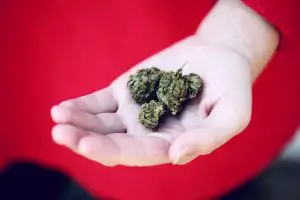If you care about your buds’ quality, you will pay more attention to the last miles of your weed growing journey. It would be ridiculous, even heartbreaking, to give your plants first-class care during their entire growth but loosen your resolve during the drying phase. While every stage is important, you lose so much when you spoil the yield at the last stages—time and money—a whole lot of them.
To save your buds, you need to understand what happens in the drying room, how they happen, and why they do. You know, beginning from simple practices like hanging the plants upside down when they dry.
Alternatively, you can begin your research by looking into what you need in your weed and how to get them. In this quest, you’ll learn the importance of the drying phase and the norms around it. How do you keep your buds from bugs? How do you make them taste stronger? How do you remove the chlorophyll?
Pursuing these answers will bring you to a more practical understanding of how things happen in the drying phase. Deeply-engraved practices— like hanging the plants upside down— will begin to make sense.
Table of Contents
Why Do You Hang Cannabis Plants Upside Down to Dry?
Hanging the cannabis plant upside down to dry will ensure that the sap flow continues to the buds. The sap increases the moisture content in the plant, slowing down the drying process. The slow drying process allows more time for the chlorophyll and sugars to be broken down and lost without losing terpenes, cannabinoids, and flavonoids. This gives your buds the full flavor and aroma.
Why the Drying Process is Vital
Once the weed is harvested, the plant is dried for several 
reasons. First, drying removes moisture from the plant to make it easier to store and use. Before drying, the moisture content makes the buds more susceptible to pests and diseases. The chlorophyll that’s also present in the leaves tastes bitter—and still isn’t beneficial to the weed user. Drying removes the chlorophyll, plus other chemical remnants from the fertilizers, leaving behind rich buds.
To remove the chlorophyll, you must dry your weed in darkness. Since the plant still strives to live (even after being cut), it will break down the chlorophyll into sugars and lose them in the drying process. Once lost, your buds will remain only with the needed contents, thus richer and more fragrant.
How to Dry Cannabis Plants Properly
Proper drying is essential in improving the quality of your buds. It is a delicate procedure, and you don’t want to lose the race while the finish line is in view.
I wrote a complete guide on how to dry and cure cannabis. It will help you evade the common errors that reduce bud quality. Once you’re up for it, you can maximize the full benefits of drying your marijuana plants by;
Hanging Them Upside Down
When you hang cannabis plants upside down, the sap continues to flow to the top, increasing moisture content and slowing the drying process. A slower drying process is more beneficial to your plants as they don’t lose the good stuff to evaporation.
To slow down the process even further, do not remove a lot of leaves. The leaves will curl around the buds, reducing moisture loss and preventing rapid terpene loss. However, if you’re in a more humid environment, you will want your plants to dry a little faster to limit the chances of mold and other fungal infestations.
Hanging Them in A Dark Room
Light and heat break down THC, decaying into its oxidation compounds such as CBC and CBN. These compounds are less potent and thus produce a dull high. Hanging your plants in the dark preserves THC enabling it to be fully activated, which results in potent buds.
The temperature in the darkroom should be around 20° Celsius. Low temperatures make the drying process too slow and expose the plants to fungi, while very high temperatures quicken the drying process, leading to the loss of essential compounds.
Drying your weed in the dark improves your buds in many ways. Read this article and learn how dark the dry room should be and the many ways it potentiates your weed.
Hanging Them in A Well-Ventilated Room
Ventilating your drying room will prevent the development of fungi. It also allows you to create an equal climate for the entire room, thus providing uniform conditions for all the plants. In case you are using a fan, do not blow on the plants directly since they will dry out quickly on the outside while remaining wet on the inside.
Giving the Time (10 - 14 Days)
It takes ten to fourteen days for buds to completely dry and

Photo by Sharon McCutcheon on Unsplash
allow the process of breaking down all chlorophyll present. Once the chlorophyll is completely broken down, the plant will smell and taste better. Not giving your plants enough time will negatively affect the taste and the quality of your weed.
You will know your buds are ready when they become sticky, and the twigs of the plants snap.
Benefits of Properly Drying Marijuana After Harvesting
Drying your weed plants after harvesting is highly beneficial because;
- The plant breaks down chlorophyll and sugars and gets rid of them, dramatically improving the buds' taste and smoothness.
- Drying removes the unpleasant smell of fresh hay or cut grass, which is common to newly harvested buds, and replaces it with the unique scent of your cannabis strain.
- It brings out the unique flavors of your weed strain and potentiates the weed.
- It reduces the harshness in buds. Properly dried buds are unlikely to cause coughing or headaches when smoked.
- It reduces the chance of bacteria or mold growing on your buds.
In Conclusion
Hanging your cannabis plants upside down during drying utilizes all the sap within the plant, thus slowing the drying process. Other growers opine that if the plant is left upright, the essential compounds can flow downwards to the stem, an argument I find juvenile. The benefits of slow-drying are enough to keep utilizing this standard way of drying weed.

